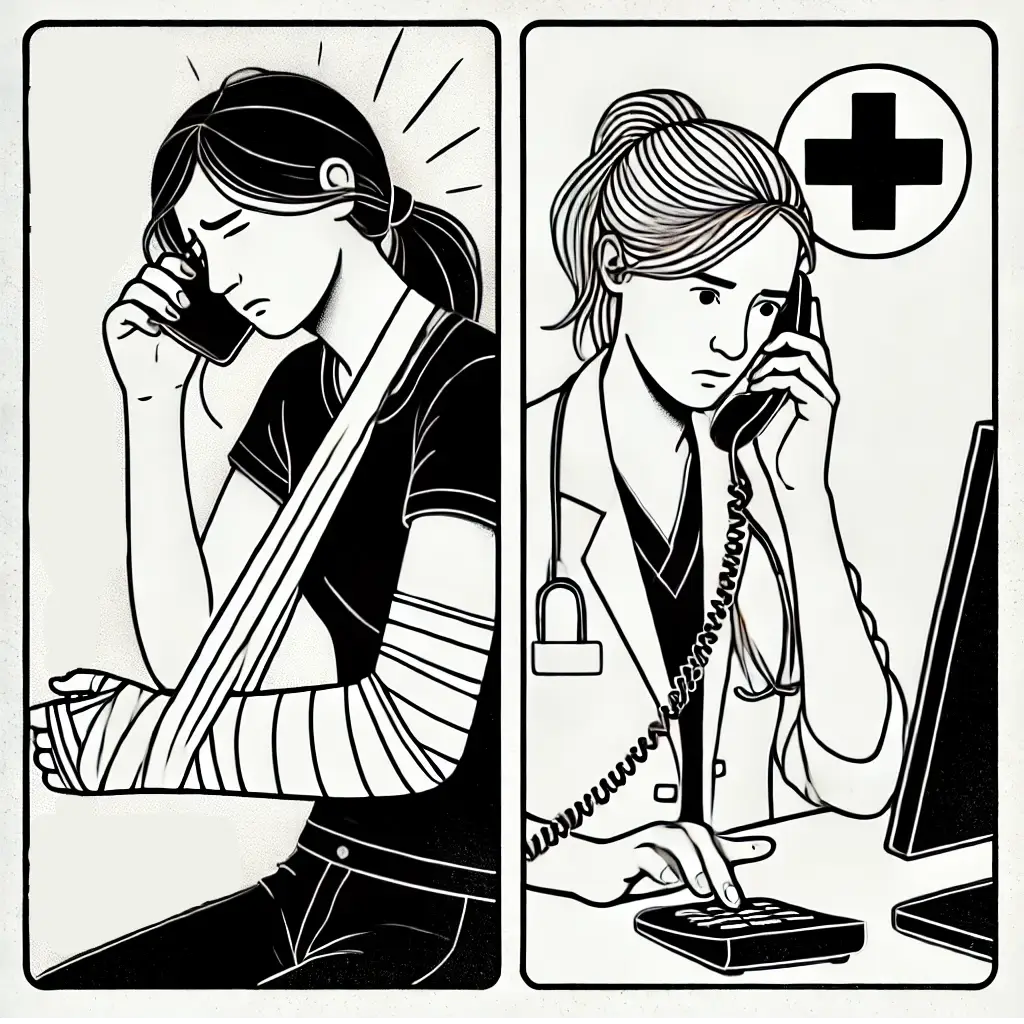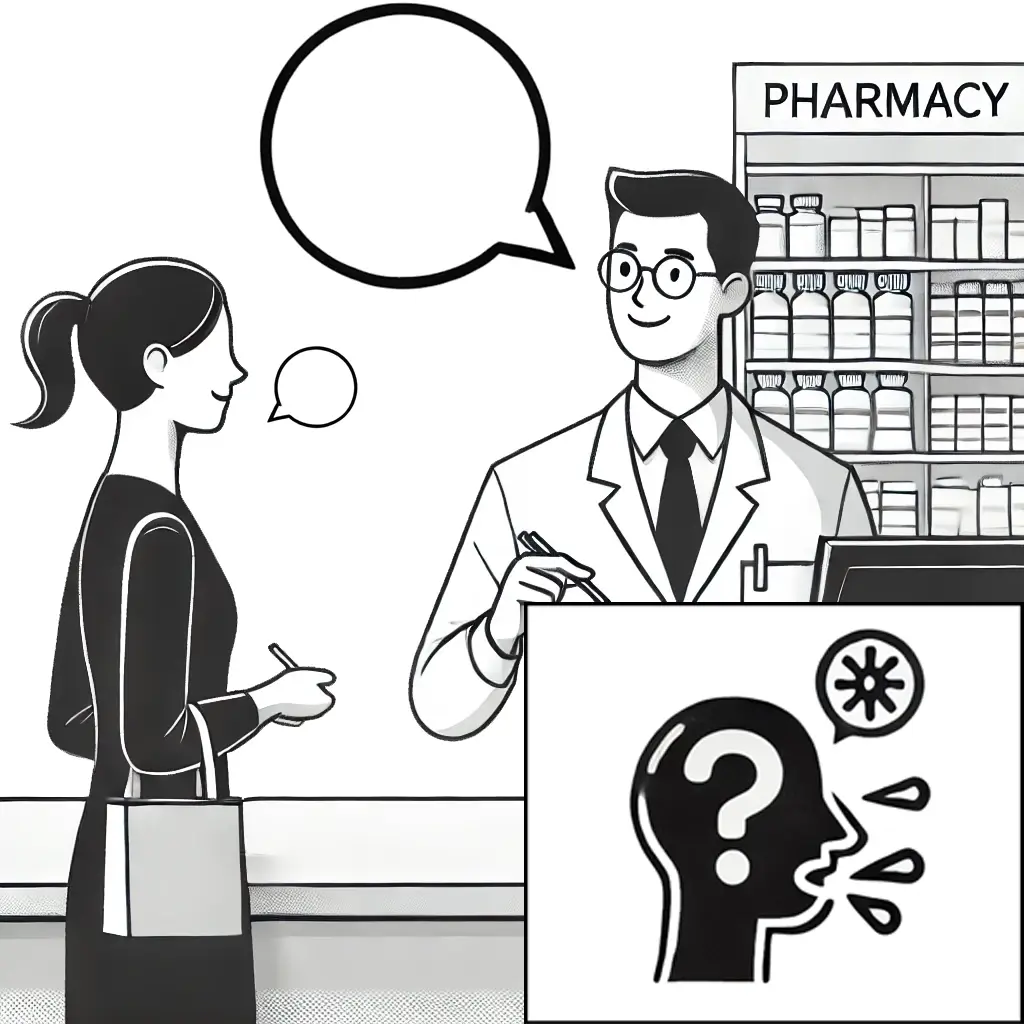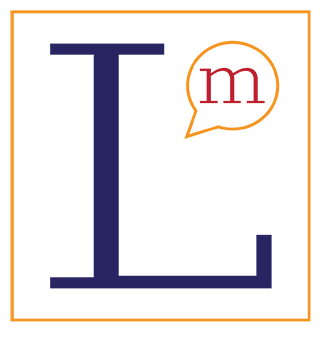Complete Guide to the Spoken Examination of the FIDE exam
The Swiss FIDE test is a key step for anyone in Switzerland seeking to demonstrate their language proficiency in French, German, or Italian. This guide will focus on the spoken examination, providing insights into what to expect, how to prepare, and practical tips for success. Whether you’re taking the exam in Geneva or Vaud, this resource will help you understand what to expect on the day of the exam and how you can study for it.

Table of Contents
What’s the FIDE Test?
The FIDE test assesses adults’ French, German, and Italian language proficiency (16 years and older) at the A1 to B1 levels. Swiss authorities recognize it, and it serves as proof of language competency for various purposes, including naturalization, settlement, and residence permits. The FIDE test consists of two main components: Oral and listening and Writing and reading tests, each spanning two language levels (A1-A2 or A2-B1). This assessment aims to determine whether candidates can effectively communicate in everyday situations.
If you live in a French-language canton, such as Geneva or Vaud, you must take the French FIDE test.
Need help preparing for the FIDE exam?
Overview of the FIDE Oral Exam: Structure & Expectations
The FIDE test assesses your ability to speak and understand French in everyday, real-life scenarios. While exam content is standardized, the questions can vary slightly depending on your background.
The oral and listening sections of the exam last between 10 and 20 minutes, respectively. The duration of these sections does not necessarily indicate performance. The written part, which also includes a reading component, has a maximum duration of 60 minutes.
The results of the FIDE test are documented in a Language Passport, which is recognized by Swiss authorities as proof of language competency.
Here’s what to expect:
Arriving at the Examination Centre

Upon arriving at the examination center, you’ll be asked to provide your ID card and basic personal information, such as your phone number and the reason for taking the test. For candidates in Geneva or Vaud, expect these questions to be asked in French.
Initial FIDE test Questions (Non-Examined Section)
The first part of the examination is not graded. However, the examiner will ask you general questions about your life, such as:
- How long have you been in Switzerland?
- How long have you been in Geneva?
- What commune do you live in?
- Do you have children? Do they go to school?
These questions allow the examiner to:
- Assess your spoken level informally.
- Determine which types of scenarios are most relevant to you.
The FIDE test questions are based on daily scenarios or situations according to routines everyone will encounter in Switzerland. They ask you questions, in theory, about your routine. So, if you don’t have children, you usually won’t be asked questions about school-related scenarios during the exam.
Structure of the Spoken FIDE Test

Regardless of your language proficiency, whether you are a beginner or fluent in French, everyone starts with the A2 oral part. The spoken and comprehension tests are graded together, while the writing and reading tests are assessed separately.
A2 French Speaking Test
The A2 FIDE test consists of three parts:
- Task 1: Describing an Image
- Task 2: Role-Playing a Scenario
- Task 3: Answering Follow-Up Questions
FIDE A2 Oral test – Task 1 – Describing an Image
The examiner will present an image depicting a situation. For instance, you may see a picture of a person on the phone, holding their arm in pain while a medical assistant in a doctor’s office listens. The examiner will introduce the theme (e.g., “medical appointments”) and ask you to describe what you see. They’ll say something along the lines of:
“Okay, now what do you see in this image? Who are these people? What could be happening? Walk me through the image.”

Your response should include details about the situation, possible actions, and emotions of the people in the image. A typical response might be:
“This person seems to have hurt their arm, so they’re calling the doctor to schedule an appointment. They look uncomfortable and frustrated. The medical assistant picks up the phone and asks how they can help. The patient explains the injury and asks for the earliest available appointment.”
This description should last one to two minutes.
Note: To date, the FIDE manual states that the image is always of one person calling another. While this is the case, we recommend preparing for phone and in-person conversations. This will help you mutualize the preparation for the A1 and B1 parts of the test.
Just keep in mind that this may be simulated on the phone during the exam rather than in person.
Practice Your Speaking Skills with a Coach
Practical Preparation Tips:
To prepare effectively, use freely accessible scenarios, the free mock test, or other mock tests available on our platform. Practice describing situations aloud—ideally with someone else—to build confidence and fluency.
It’s also helpful to write down key phrases that apply to multiple situations. Since the test often involves a phone call, generic phrases like:
- “This person is calling XYZ to inform them they will be late.” (useful for doctor’s appointments, administrative meetings, or banking inquiries)
- “This person is calling to request more information about ABCD.” (applicable to various formal inquiries)
These reusable structures will help you quickly adapt to different test situations.
Additionally, practicing a simple conversation pattern, such as “This person asks, and that person answers. This person asks again, and that person responds,” can help you organize your vocabulary in a structured setting.
These strategies help refine your level to meet the test requirements. However, if you need to progress from A1 to A2 or B1, more intensive self-study or language classes may be necessary.
Our platform provides structured mock tests and additional resources to help you prepare effectively. For more details, explore our full article here or contact us for personalized guidance.
FIDE A2 Oral Test – Task 2 – Role-Playing a Scenario
Next, the examiner will introduce a role-play scenario based on the image in the first question. This tests your ability to converse, understand, and respond appropriately to the given situation. For example, they might say:
“The person in the image hurt their arm while biking and is now calling their doctor. I’ll play the medical assistant role, and you will play the patient. Let’s begin.”

You will then engage in a short conversation where you must make an appointment, provide personal details, and possibly negotiate an earlier time slot if necessary. The conversation might include the following:
- Greeting the receptionist.
- Explaining the injury.
- Requesting an urgent appointment.
- Responding to questions about your symptoms and previous medical care.
Here’s where it gets fun—examiners sometimes want you to engage in the role-play, so don’t be afraid to go all in. You might even start with a cheerful “Dring, dring, dring!” as if you’re actually making the call. It’s not just about getting the right words; it’s also about making the conversation feel natural!
Example of role play:
(Phone rings) Dring, dring, dring!
Medical assistant: Hi, doctor’s office; how can I help you?
You (the patient): Oh, well, I hurt my arm the other day. Would it be possible to schedule an appointment with the doctor?
Assistant: what’s your name, address, etc.?
Assistant: Yeah, look, the doctor’s only available next week
You: but it’s urgent because it’s hurting. Is it not possible to squeeze something in today?
Medical assistant: maybe… okay… look, come around 4 o’clock, and the doctor will try to see you between two patients. Have you gone to the hospital?
You: … Well, no, because I don’t think it’s broken. It just hurts a lot.
Medical assistant: Okay, okay, well, come, and maybe we’ll have to send you for a scan.
Ect.
The role-play will last a few minutes, and the examiner will assess your speaking and comprehension skills.
Note:
While this is a speaking test, it is also a comprehension test. If they ask you questions and you answer with something completely different, it doesn’t show that you understand; therefore, the conversation isn’t going well.
To improve effectively, use freely accessible scenarios, free mock activities, or other role-play exercises on our platform. Practicing aloud—ideally with someone else—will help build both confidence and fluency.
Since this task involves responding naturally in a conversation, focusing on common question-and-answer patterns is useful. Many situations involve predictable exchanges, so learning key structures can make it easier to respond quickly. For example:
- “I would like to schedule an appointment. Are there any available times?”
- “I need more information about this service. Can you explain how it works?”
- “I’m calling because I have a problem with my bank card. What should I do?”
It’s also helpful to anticipate possible follow-up questions. For example, if someone asks about an appointment, be ready to respond with details like “I am available in the morning” or “I would prefer a time after 3 p.m.”
These strategies help refine language skills to fit the conversation’s needs. Our platform provides structured mock dialogues and additional resources if you want to explore further. Read our full article here or contact us for personalized guidance for more details.
FIDE A2 Oral Test – Task 3 – Answering Follow-Up Questions

Task 3 of the A2 oral test involves answering follow-up questions and builds on the scenarios and situations in Tasks 1 and 2. This series of questions assesses your ability to engage in conversation, respond to inquiries, and provide relevant information.
The examiner will ask you three questions related to the scenario. These questions will require you to:
- Talk about your habits and preferences (e.g., “What is important for you when choosing a doctor?”)
- Describe an experience (e.g., “Have you ever had to call a doctor for an emergency?”)
- Explain a process or behavior (e.g., “What do you do if you get hurt and have an emergency”)
Your answers should be structured but do not need to be grammatically perfect. The focus is on clear communication and the ability to be understood.
Practical Preparation Tips:
To respond effectively:
- Think ahead about everyday topics like appointments, daily activities, or work.
- Give personal answers with a short explanation (e.g., “Yes, I’ve called a doctor before because I had a fever.”).
- Prepare for follow-up questions, such as “Why?” or “Can you give an example?”
- Avoid one-word answers; even short responses should include a minor detail.
Simulate a conversation using mock interviews or practice with a partner.
Moving forward to A1 or B1

After completing the A2 test, the examiner will recommend whether you should proceed to the A1 or B1 test. While examiners may offer guidance, the decision ultimately rests with you. Some examination centers may attempt to influence this decision, but you can choose the level you wish to try.
Note: The examination center isn’t allowed to make that decision for you. We’ve heard of some places requiring people to take an in-house (non-FIDE) test to assess the candidates’ levels internally, and then use this to inform the decision. It’s important to know that if you want to insist on the decision and continue to B1, even though they’re advising you to do A1, that decision ultimately comes down to you, not the examination center.
If they really push you to do A1 rather than B1, it may be because your level does not meet the criteria, but again, that’s your decision.
Let’s imagine that you’re continuing to A1.
A1 Oral Test

The A1 oral part consists of two exercises:
- Exercise 1 – Describing a sequence of images
- Exercise 2 – Simple role-play
FIDE A1 Oral Test – Task 1 – Describing a Sequence of Images
Task 1 involves describing a sequence of images.
You’ll be presented with four sequential images illustrating a simple scenario, such as going to a pharmacy or the market. You must describe what is happening in each image, focusing on the following:
- The people involved.
- Their actions.
- The overall situation.
You must describe what’s happening in each image using simple vocabulary and sentence structures.




At the A1 level, your sentences do not need to be fully structured. Broken sentences, keywords, and simple phrases are acceptable if the overall meaning can be made out.
They expect you to describe what’s happening in the four pictures and identify the people involved. While details like their clothing may be relevant, the primary focus should be on explaining the situation first.
Examiner: This person says: “Hello.” What does this person say?
You: “I need medication for a cough.”Examiner: This person says: “I recommend this syrup.” What does this person say?You: “Ok, how much does it cost?”
Examiner: This person says: “Thank you, goodbye.” What does this person say?
You: “Thank you, bye.”
What people think the examiner is expecting to hear for an A1 pass:
“This person’s getting into the pharmacy. They say hello to the pharmacy worker. The pharmacy worker asks them how they can help them. Person says they have hurt in throat. The pharmacy person recommends a syrup. The woman says “ok”. The pharmacy person says, “Thank you, goodbye.” The woman says “bye, thank you.”
What would pass an A1 evaluation criteria:
“Woman pharmacy enter. Woman: “Hi.” Person say “hi, how help you?”, woman: “throat hurt”, worker say “here, syrup” woman “thank you bye” worker say “thank you bye.”
Evaluation criteria
At the A1 level, you’re not expected to form complete sentences. Sentences can be fractured or simply a sequence of segmented words. Overall, you have to get your point across. You have to demonstrate that you understand the image, and you have to show that you can convey your message.
It seems simple here, but it’s much more daunting for people at an A1 level. The most common mistake we’ve seen people make is only describing what people are wearing and not the situation.
This will probably get you the A1, but it won’t qualify you for the A2. So, aim for the A2 FIDE criteria to describe the situation and enhance your response by including details like clothing or objects in the room.
Practical Preparation Tips:
To prepare for this task, practice describing images and sequences of events using simple language. Focus on developing your vocabulary and grammar skills, and review the FIDE test format to understand what is expected of you.
FIDE A1 Oral Test – Task 2 – Simple Role-Play
For the FIDE A1 oral test, Task 2 involves a simple role-play scenario based on the first exercise. The students will explain the situation and then use the same images as in part 1.
This exercise assesses your ability to communicate effectively and demonstrate basic language skills.
The examiner will read a prompt and engage you in a simple conversation based on the first exercise. They will point to each image and say, “This person says, “XYZ.” What does this person say?
(Phone rings) Dring, dring, dring!
Examiner: This person says: “Hello.” What does this person say?
You: “Hello.”
Examiner: This person says: “How can I help you?” What does this person say?
You: “I need medication for a cough.”
Examiner: This person says: “I recommend this syrup.” What does this person say?
You: “Ok, how much does it cost?”
Examiner: This person says: “Thank you, goodbye.” What does this person say?
You: “Thank you, bye.”
The conversation will remain simple, focusing on your ability to understand and respond appropriately.

Note:
Many students find this exercise harder than the A2 image description. They often assume they need to provide detailed dialogue or complex descriptions. However, at the A1 level, straightforward answers, incomplete sentences, or even one-word responses are acceptable.
You can perform well in this section by focusing on clear and concise answers.
Now, if you hadn’t gone the A1 route and you’d gone the B1 route:
B1 – Spoken FIDE test questions assessing language skills

The B1 test is quite simple in its conception; You’ll choose between two topics and engage in a structured conversation. The conversation topic can be any category or subcategory of the FIDE scenarios.
The discussion includes four questions related to the following topics:
- Describing Your Experience “What is your profession? How did you learn it?”
- Explaining a Process “Have you ever taken a continuing education course? What was your experience like?”
- Discussing Pros and Cons “What are the advantages and disadvantages of continuing education while working?”
- Answering a Hypothetical Question “Would you consider changing careers? Why or why not?”
Let’s imagine you have the choice between continued education and insurance, and you choose to continue training.
1. Examiner: What’s your current or past profession, and how did you learn it?
They expect you to have a conversation in which you tell them what you do, how long you’ve been doing it, and so on. They will probably follow up with a few questions.
2. Examiner: Have you done some form of continued learning?
You: “Yes, I did. I actually took French classes, and they were important for my work, and so on.”
3. Examiner: What are the negatives or positives of doing continued training alongside your work?
You: ‘Okay, well, the positives are this and that, and the negatives are this, this, this, and that.”
Note: One evaluation criterion is that the person tested can enumerate a situation’s positive and negative aspects. Therefore, listening to the questions and answering everything is essential. Even if you say, “There are no negatives,” this shows that you understood the question.
4. Examiner: Would you think of taking on a new job?Why, why not?
You: “I’ve been doing this for 40 years, so, no. My next step will be vacationing on the beach in Bora Bora and learning carpentry, but just for fun… and so on and so forth..”
The point here isn’t the veracity; it’s not the truth of what you’re saying; they want to see that you can speak and understand what they’re saying.
Note: Remember—the truth doesn’t matter! This exam isn’t about whether you’re actually considering changing your career at 65 to become a doctor.
This exam is not an exam of your Swissness; it’s not an exam of the truth. It’s about demonstrating your ability to communicate effectively. So, if you want to say, “I dream of being a medical practitioner at 70,” go for it!
Finalizing Your Results

At the end of the spoken exam, the examiners confer and agree on a grade before sending the results to Bern for final validation. Although the examination center knows whether you have passed, it cannot inform you. Official results take approximately four weeks to process and send to you. Calling or emailing the examination institution or the state secretariat for migration won’t accelerate the process.
Evaluation:
At the A1 level, you should be able to answer with a series of sequential yet unstructured words. The examiner can make out or guess what you mean.
At the A2 level, you should be able to form structured sentences. They may not always be grammatically correct—perhaps the syntax is slightly off—but your meaning should be clear. You should also be able to use the correct vocabulary or find alternative ways to express yourself.
At the B1 level, you are expected to produce well-structured sentences. While you may still make grammatical mistakes, particularly in longer sentences, your vocabulary should be solid, and your responses should be fluid and coherent. Your conversation should feel more natural and interactive at this stage, rather than simply linear.
The Comprehension Test

The comprehension test typically follows the oral exam, though some centers schedule it separately. Unlike the oral test, which involves two examiners (one speaking and one taking notes), the listening test can be assessed independently.
- Only the oral part counts for two-thirds of the overall score.
- The comprehension part counts for one-third of the overall score.
How Can You Study for the Test?

To study for the FIDE test, you can use a variety of resources, including:
- Official study materials
- Official practice test
- FIDE test preparation courses and tutoring services
On your own: You can find an entire FIDE test online for free. The FIDE secretariat makes a model test available for free on the FIDE office website to help candidates prepare for the test. Language certificates obtained through the FIDE test are essential, as they serve as recognized proof of language proficiency, especially for adults in Switzerland who may need them for residency permits or naturalization.
Using My Linguistics Practice Papers: We provide many practice papers that we make available to our students for free..
What’s the Language Passport?

The Language Passport is the official document that records your language proficiency. Swiss authorities recognize it as proof of language proficiency, and it can be used to demonstrate your language skills for various purposes, such as naturalization and residency permits.
To obtain a language passport, you must take the FIDE test and meet the required language proficiency levels. The Passport is valid for an unlimited period and can be updated if you score higher on the test.
Other language certificates: As of January 2025, it is no longer possible to convert language certificates to the Language Passport.
FIDE test cost:
- Entire test: CHF 250
- Only oral and listening: CHF 170
- Only writing and reading: CHF 120
Test results: You receive the test results directly at your provided address, usually within a minimum of four weeks after the examination date.
Let’s Talk About Your FIDE Exam Goals
Examination Institution and Registration

Further information can be found in our general article on the FIDE test.
The secretariat FIDE publishes an exhaustive list of information and preparation materials. It’s worth looking through their site, both the student and teacher portals, to find more information.
The FIDE test is administered by the State Secretariat for Migration (SEM) and is recognized by Swiss authorities as proof of language competence. To register for the FIDE test, candidates can contact an examination institution directly or through its website. The FIDE test consists of two main components: Oral & Listening and Writing & Reading, each spanning two language levels (A1-A2 or A2-B1). The test can be taken at authorized test centers. The cost of the FIDE test is the same at any center and is set by the Secretariat for Migration (SEM). Candidates can take only the Oral & Listening test or the Writing & Reading tests, depending on their needs.
Candidates with disabilities or special needs may be subject to special rules. The FIDE office website offers a model test.



